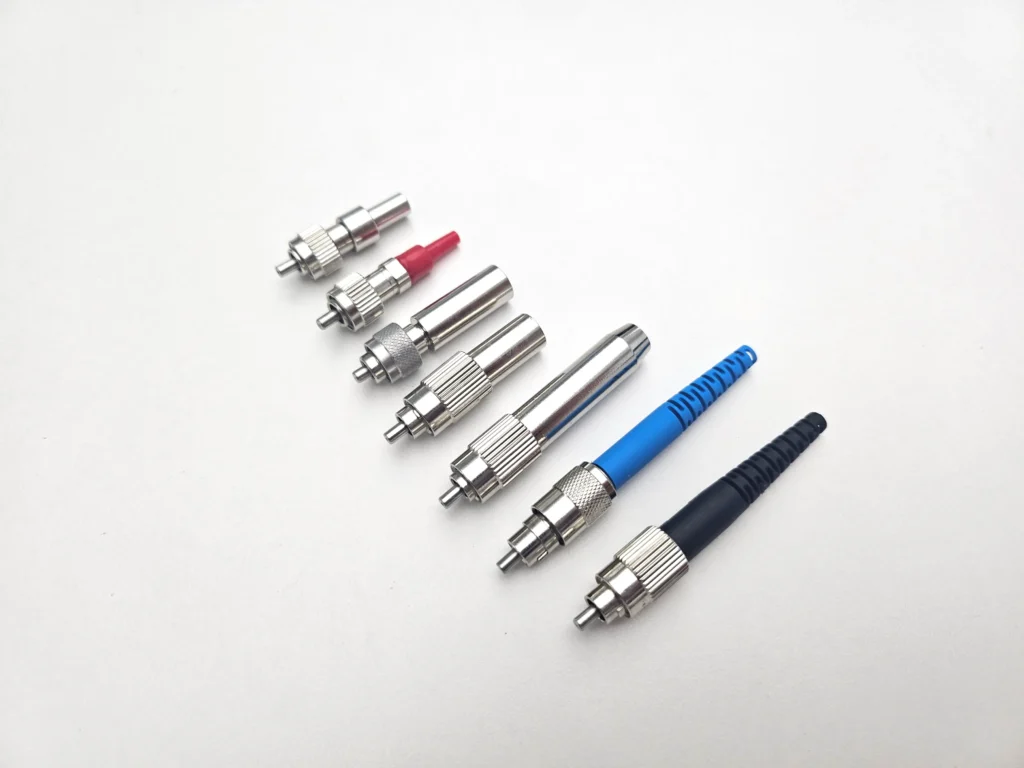The SMA905 fiber optic connector plays a pivotal role in spectroscopic detection equipment, with its applications primarily based on its optical performance, mechanical stability, and adaptability. Below is an analysis of its core applications and advantages:
1. Basic Characteristics and Compatibility with Spectroscopic Detection
- Threaded Locking Mechanism: The SMA905 ensures stable physical connection through threaded fastening, making it suitable for vibrating environments (e.g., portable spectrometers or industrial sites) to prevent signal attenuation due to loosening.
- Multimode Fiber Compatibility: It supports large-core multimode fibers (e.g., 400μm or 600μm), matching the wide wavelength range (ultraviolet-visible-near-infrared) common in spectroscopic detection, which is ideal for high light flux requirements.
- End Face Design: The flat end face (non-PC spherical) simplifies cleaning and maintenance, reducing light scattering and enabling high-precision spectral acquisition.
2. Typical Application Scenarios
- Laboratory Spectrometers: Used in UV-Vis spectrophotometers or fluorescence spectrometers to connect fiber probes with detectors, ensuring low-loss transmission.
- Industrial Process Monitoring: In online fiber spectrometers (e.g., semiconductor or pharmaceutical industries), the robustness of SMA905 adapts to harsh environments for real-time monitoring of chemical reactions or component concentrations.
- Portable Devices: Field or medical handheld spectrometers rely on its lightweight design and anti-interference capability, such as in environmental monitoring or blood component analysis.
3. Performance Advantages
- Wide Wavelength Range: Covers 250–2500 nm, meeting detection needs from ultraviolet (with UV-optimized fibers) to near-infrared.
- High Repeatability of Pluggability: The metal structure withstands frequent plugging and unplugging (e.g., in teaching laboratory equipment), with a longer service life than plastic connectors.
- Cost-Effective Solution: Compared to FC/APC or SMA906 (bevel-polished), SMA905 offers higher cost performance, suitable for medium and low-power applications.
4. Limitations and Precautions
- Higher Insertion Loss (Approx. 0.5–1 dB): Not suitable for single-mode fibers or ultra-low-loss scenarios (e.g., Raman spectroscopy), requiring a balance between light flux and signal quality.
- End Face Reflection: The flat-top design may cause back reflection, affecting high-sensitivity detection, which can be improved by anti-reflective coatings.
- Cleaning Requirements: Dust or scratches easily lead to signal attenuation, necessitating regular maintenance.
5. Selection Recommendations
- Choose SMA905 when: Prioritizing multimode systems, requiring mechanical stability, or working with a limited budget.
- Alternative Options: For low reflection needs (e.g., laser-induced breakdown spectroscopy LIBS), select SMA906; for single-mode systems, opt for FC/APC.
Conclusion
The SMA905, with its structural reliability and multimode compatibility, serves as a cost-effective connection solution in spectroscopic detection equipment, particularly suitable for industrial and educational fields. However, in high-precision or single-mode applications, its limitations must be evaluated, and upgrading the connector type may be necessary to optimize performance.


